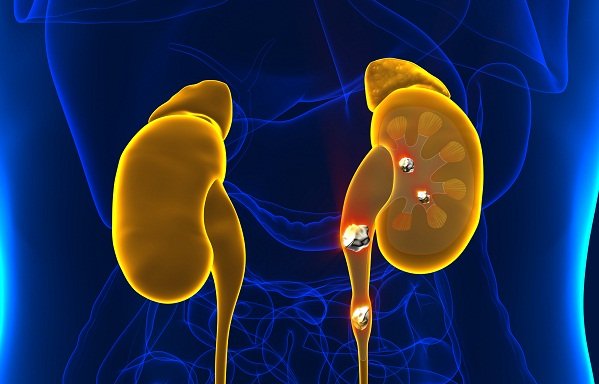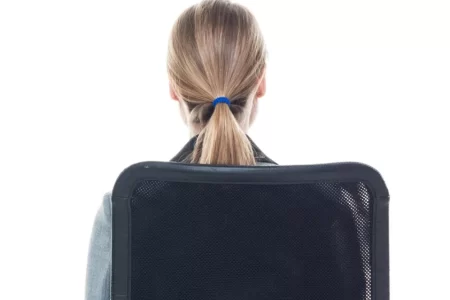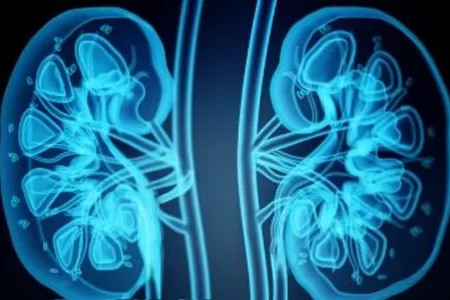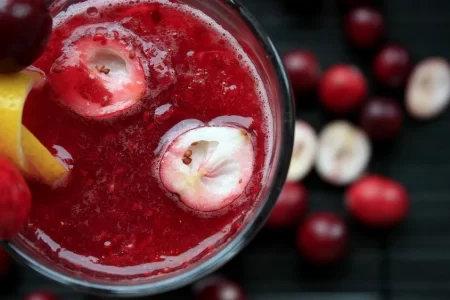What are kidney stones (renal calculi)?
Kidney stones, also known as renal calculi are small crystalline deposits which are made up of minerals and salts in the kidneys. These stones can range from very small size to large size.
Generally, kidney stones are nearly harmless when they are present in the kidneys. The small sized stones can travel from kidney to bladder through ureters and thus excrete out with urine. But sometimes, the large sized stones get stucked in the ureters which can block the passage of urine to the bladder. It results in severe pain.
Kidney stones do not cause much damage if they are recognized in proper time. If the stones get lodged in the urinary tract, then it may result in a urinary tract infection and can even cause severe complications.
They are the most common cause of blood in urine, a condition known as hematuria. If the stones are present in the urinary tract, it is known as urolithiasis and if the stones are present in ureters, this is called ureterolithiasis.
What are the causes of kidney stones?
Any abnormal change in water, salts, minerals, and other substances in urine results in the formation of kidney stones. Various factors responsible for causing kidney stones are as follows:
Low urine level
Low urine volume is the major risk factor for the formation of kidney stones. Low urine volume may result from dehydration due to hard exercise, or living in a hot place, or not drinking enough of fluids.
When urine volume is low, it is concentrated and dark yellow in color. Increasing fluid intake dilutes the salts present in the urine.
Diet
Diet greatly affects the chance of formation of stone. The most common cause of calcium kidney stones is the presence of high levels of calcium in urine which entirely depends upon the way a person’s body processes it.
Less intake of calcium in the diet does not stop stones from forming. Doctors usually don’t tell people to lower their dietary calcium intake so that the urine calcium level is lowered but it should not be too high.
Adding too much salt in the diet is a big risk factor for calcium stones. This is because of the fact that salt does not allow bones and body tissues to absorb calcium and thus excretes it out with urine.
A diet which is high in protein, like fish, chicken and pork, can increase the acid level in the body and in urine. This makes it easier for calcium oxalate and uric acid stones formation.
Bowel conditions
Certain bowel conditions that cause diarrhea can increase the formation of calcium oxalate kidney stones. Diarrhea can result in the loss of large amounts of fluid from the body thereby lowering urine volume.
Patient’s body may absorb excessive oxalate from the intestine which may result in more oxalate in urine. Both low urine volume and high levels of urine oxalate can help in forming calcium oxalate kidney stone.
Medical Condition
Some medical conditions show an increased risk of kidney stones formation. Abnormal growth of the parathyroid glands can increase calcium levels in the blood and urine. This can lead to kidney stones.
Another condition known as distal renal tubular acidosis results in acid build-up in the body which can also increase the risk of calcium phosphate kidney stones.
What are the types of kidney stones?
Understanding the type of kidney stones helps in determining the exact cause of its formation and in identifying ways to reduce the risk of getting more such stones. There are many types of kidney stones based on the mineral used in their formation.
Calcium stones
Most of the kidney stones are calcium stones, usually calcium oxalate. Oxalate is a naturally occurring substance which is found in food. Dietary factors, intestinal bypass surgery, high doses of vitamin D, and several metabolic disorders can raise the concentration of calcium or oxalate in urine.
Calcium stones may also be present in the form of calcium phosphate. This type of stone is very common in metabolic conditions, like renal tubular acidosis, etc.
Uric acid stones
Uric acid stones are formed in people who do not drink enough fluids, those whose diet contains high protein, and those who have gout. Certain genetic factors can also increase the risk of uric acid stones.
Cystine stones
Cystine stones are formed in people who have a hereditary disorder which causes the kidneys to excrete too much amino acid. This condition is known as cystinuria.
Struvite stones
Struvite stones are formed in response to an infection, like urinary tract infection. These stones tend to grow quickly and become large.
What are the symptoms of kidney stones?
Kidney stones generally do not cause any symptoms. When a stone leaves the kidney, it travels to the bladder through a small and thin pipe called ureters.
Often the stone can get stucked in the ureters. When the stone blocks the flow of urine out of the kidney, it causes the kidney to swell causing severe pain.
Some common symptoms of kidney stones are as follows:
- A sharp back and side pain, often reaching the lower abdomen. In some cases, women report pain to be worse than childbirth labor pains. The pain often starts suddenly and comes in waves.
- Feeling urgency to urinate or urinating more often
- Burning sensation during urination
- Urine accompanied with blood
- Nausea and vomiting
- Feeling pain at the tip of the penis, in males
- Fever and chills due to infection
How are kidney stones diagnosed?
The diagnosis of kidney stones is done when the patient shows some prominent symptoms. There is a list of diagnostic tests used to diagnose kidney stones. Some of them are as follows.
Methods and diagnostic tests for diagnosing kidney stones (renal calculi)
Blood testing
Doctors may ask patients for a blood test which may reveal calcium or uric acid level in the blood. Blood test results help in monitoring the health of kidneys.
Urine testing
In urine testing, urine sample is collected at an interval of 24-hour and tested for the concentration of stone-forming minerals. For this test, the doctor may request the patient to undergo two urine collections over two consecutive days.
Imaging
Imaging tests help in visualizing kidney stones in the urinary tract. Simple abdominal X-rays are generally used to see the stones but it cannot help in viewing small stones. For viewing very tiny stones, high-speed or dual energy computerized tomography (CT) is generally used.
Other imaging options include an ultrasound, a noninvasive test, and intravenous urography. Intravenous urography involves injecting a dye inside an arm vein and then taking X-rays or CT images as the dye travels through kidneys and bladder.
Analysis of passed stones
This test is used to check the mineral of kidney stones. In this test, a lab technician tests the urine sample for the presence of stones and then observes the chemical or mineral with which the stones are formed. With the help of the report, the doctor can accurately tell the cause of kidney stone formation.
What are treatment options for kidney stones?
Treatment of kidney stones depends on the type of stone, its size and the duration for which symptoms are observed. The doctor can opt for any of the following treatment options to treat kidney stones.
Medications for kidney stones
There are certain medications which can control the amount of minerals and salts in urine. Here are some examples:
- Calcium stones– Medicines like thiazide diuretic are prescribed to prevent calcium stones from forming.
- Uric acid stones– Certain medicines such as allopurinol are used to reduce uric acid level in blood and urine.
- Struvite stones– To prevent the occurrence of struvite stones, many doctors recommend strategies to keep urine bacteria free, thereby preventing the infection.
- Cystine stones– Doctor advices to drink more fluids to produce more urine.
Surgery
Surgery is the last option to treat kidney stones if the stones fail to pass through ureters or the pain is extreme and the patient cannot wait for stones to pass naturally.
There are many surgical methods used to remove kidney stones-
Shock wave lithotripsy (SWL)
Shock Wave Lithotripsy (SWL) is a surgical method which is used to treat stones in kidney and ureters. Shock waves are projected on the stones using X-rays or ultrasound to identify them. Shock waves are fired repeatedly on the stone and cause it to break into small pieces. These smaller pieces then pass out with urine in few weeks.
Ureteroscopy
In ureteroscopy, a very small telescope, called an ureteroscope, is passed into the bladder, upwards to the ureters and into the kidney. It is then used to treat stones present in the bladder, ureters and kidneys. This technique helps the doctor to see the stones without making any incision in the body.
Percutaneous nephrolithotomy (PCNL)
Percutaneous Lithotripsy (PCNL) treatment is used for treating large stones in the kidney. General anesthesia is required to do a PCNL. It involves making a small incision (cut) in the back or side of the body to allow a rigid telescope called nephroscope be passed into the hollow part of the kidney where the stone is present.
An instrument is passed through the nephroscope and it breaks the stones and suctions out the small pieces.
How to prevent kidney stones from forming?
Prevention is the most preferable way to treat kidney stones. There are certain points that should be noted to prevent the formation of kidney stones.
Changes in lifestyle
Intake of fluids
Doctors usually recommend passing of about 2.5 liters of urine a day. Therefore, it is advisable to drink plenty of fluids.
Oxalate-rich foods
If a patient forms calcium oxalate stones, the doctor might recommend some restrictions on foods rich in oxalates. These include beets, okra, Swiss chard, sweet potatoes, spinach, nuts, tea, chocolate, black pepper, soy products, etc.
Eat plenty of fruits and vegetables
Eating fruits and vegetables daily is recommended for people who have kidney stones. Fruits and vegetables are rich in potassium, magnesium, antioxidants, citrate, and phytate which help in preventing the formation of stones.
Reduce the amount of salt in diet
Sodium causes an increase in the level of calcium and cystine in urine. The health care provider may advise the patient to avoid foods that have a high amount of salt. According to the reports by the Centers for Disease Control (CDC), people are advised not to eat more than 2,300 mg of salt per day.
Frequently Asked Questions
What are the primary causes of kidney stones?
Kidney stones can form due to various factors, including dehydration, dietary habits high in oxalate or calcium, certain medical conditions such as hyperparathyroidism or urinary tract infections, and family history of kidney stones.
How are kidney stones diagnosed?
Diagnosis of kidney stones typically involves a combination of medical history review, physical examination, imaging tests such as CT scans or ultrasounds, and urine analysis to determine the composition of the stone.
What treatment options are available for kidney stones?
Treatment options for kidney stones depend on the size, location, and composition of the stone. They may include pain management, increased fluid intake, medication to facilitate stone passage, extracorporeal shock wave lithotripsy (ESWL), ureteroscopy, or surgical removal.
Can dietary modifications help prevent the recurrence of kidney stones?
Yes, adopting dietary modifications such as increasing fluid intake, reducing sodium and oxalate consumption, limiting animal protein intake, and maintaining a balanced diet rich in fruits and vegetables can help prevent the recurrence of kidney stones.
Are there any complications associated with untreated kidney stones?
Yes, untreated kidney stones can lead to complications such as urinary tract infections, kidney damage or loss of kidney function, chronic pain, and recurrent stone formation. Seeking prompt medical attention is essential to prevent complications.







